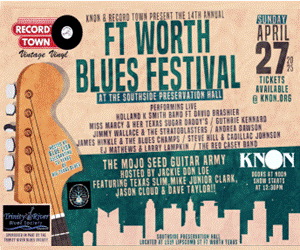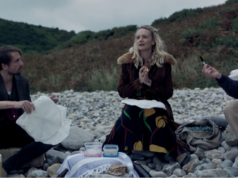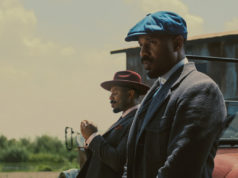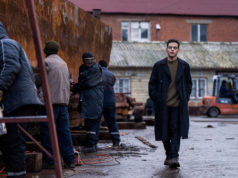For his first feature film, The Fandango Sisters, José Juan Sauceda shot his rock music drama at various Fort Worth locations (Rose Marine Theatre, 1919 Hemphill, Norris Conference Center) and used a number of Fort Worth bands (The Me-Thinks, Eaton Lake Tonics, The Dangits). “I didn’t want to make a Dallas movie or an Austin movie,” said the bespectacled 31-year-old. “I wanted to make a Fort Worth movie. Lucky I don’t have much competition.”
Having worked on post-production for two years, he’s now ready to spring his film upon the world.
A graduate of the University of North Texas film program, Sauceda was working a retail position at Half Price Books while dealing with a case of writer’s block. “I was thinking about doing this whole vampire epic that would have cost way too much,” he remembered. “But then I saw Clerks and Slacker and realized that I needed to do something small, something I could do with my friends.”
 The Fandango Sisters started as a short film (“not very good” by the filmmaker’s admission) that featured a main character being continually pestered by two annoying, Ramones-worshipping sisters with a struggling punk rock band. Sauceda found audiences responding to the sisters more than the protagonist, so he decided to make his first feature film about the sibling characters named Jackie and Judy.
The Fandango Sisters started as a short film (“not very good” by the filmmaker’s admission) that featured a main character being continually pestered by two annoying, Ramones-worshipping sisters with a struggling punk rock band. Sauceda found audiences responding to the sisters more than the protagonist, so he decided to make his first feature film about the sibling characters named Jackie and Judy.
He got a boost from producer Adam Dietrich, the founder of the avant-garde theatrical troupe The Butterfly Connection, whom Sauceda met while they were both working on the first Lone Star International Film Festival. “I was looking for films to produce,” said Dietrich, who confirmed that in response to the current economic downturn, Butterfly is mounting fewer stage productions and concentrating on the potentially more lucrative venues of film and television. In The Fandango Sisters, he said, “I saw a chance to do something larger than a film. It’s a chance to represent Fort Worth and its arts and culture. … I know all these incredible actors. Why can’t we make a great movie here?”
The film was shot in July 2009 on a budget of less than $60,000 and was self-financed to a large extent, though Sauceda said donations helped, including those made via PitchIn.com and at a barbecue fund-raiser. Various businesses also opened their facilities to the filmmakers free of charge. “I learned to trust strangers, professionals,” Sauceda said. “When I was making short films with my friends, we had a shorthand so that people knew what I wanted from them, but I had to learn to communicate my ideas to actors and crew members who’d never worked with me before.”
Dietrich pointed out that a two-year post-production period is not unusual for a film with such a low budget. While the filmmakers originally planned local screenings of the film for early this month, they’re now aiming to have The Fandango Sisters finished by August, in time to submit it to festivals.
Looking back on their first meeting about the film, when he and Sauceda drove through a winter ice storm to hammer out production schedules and logistics, Dietrich remembered, “[Sauceda] really felt an urgency to get it done. I think that urgency is why other people got involved. They really wanted to do this.”











